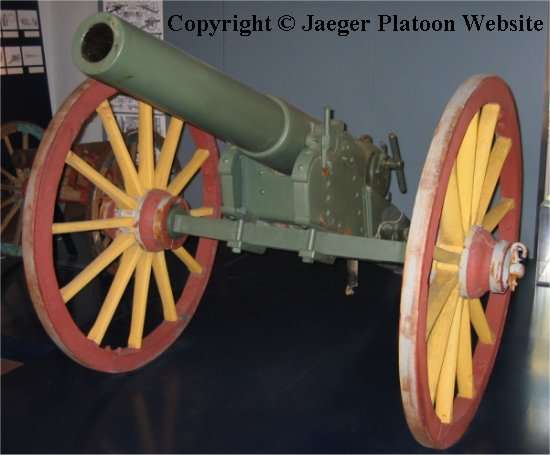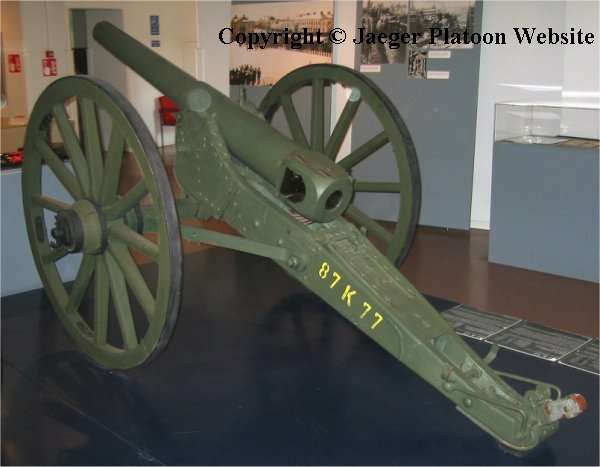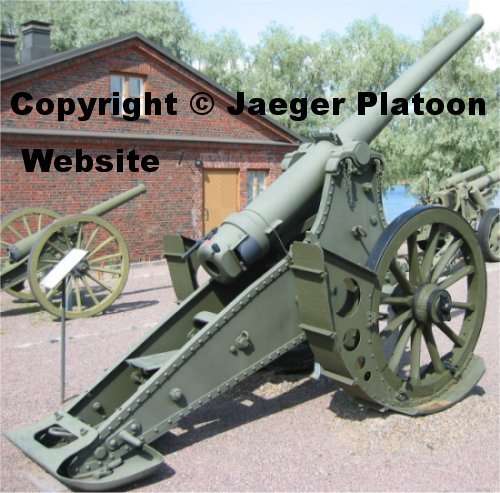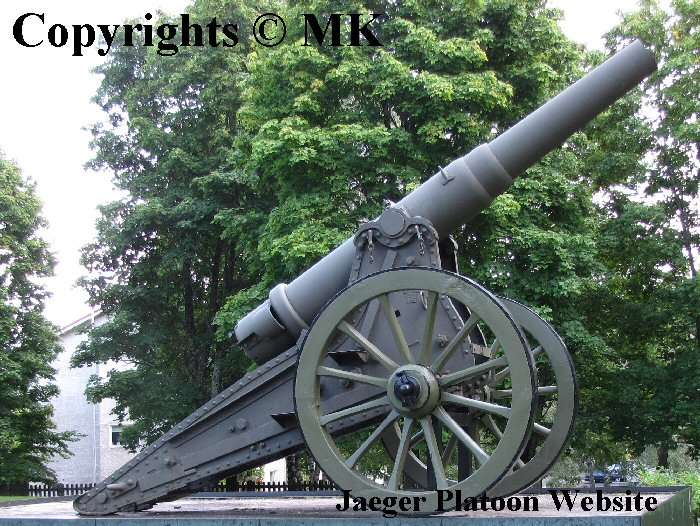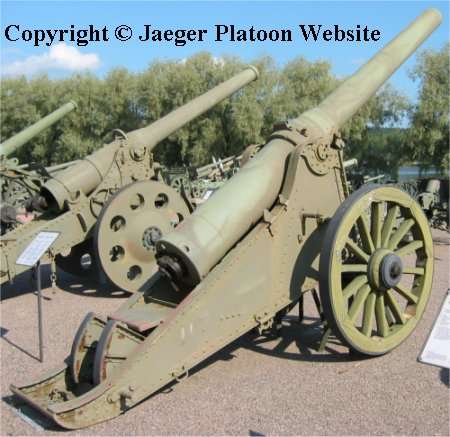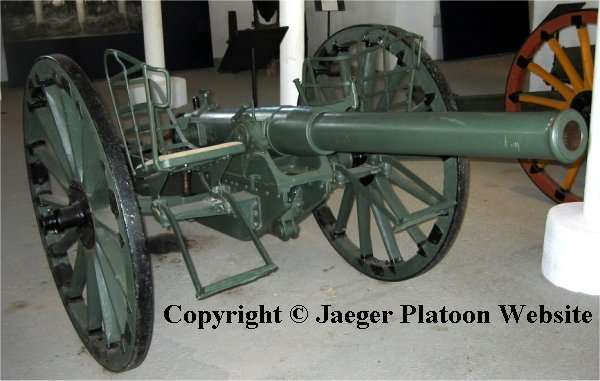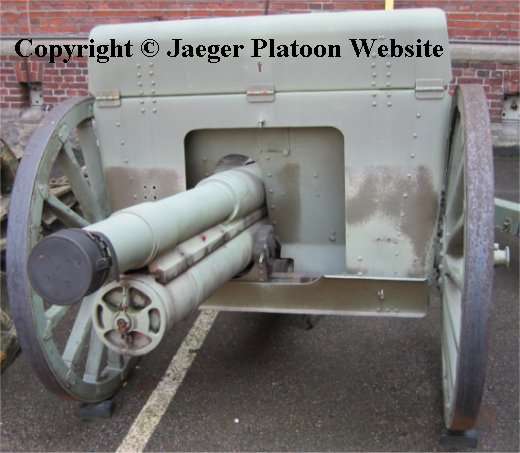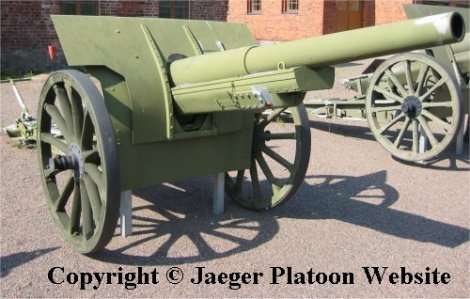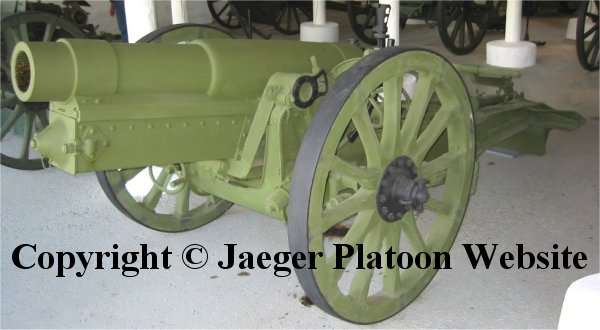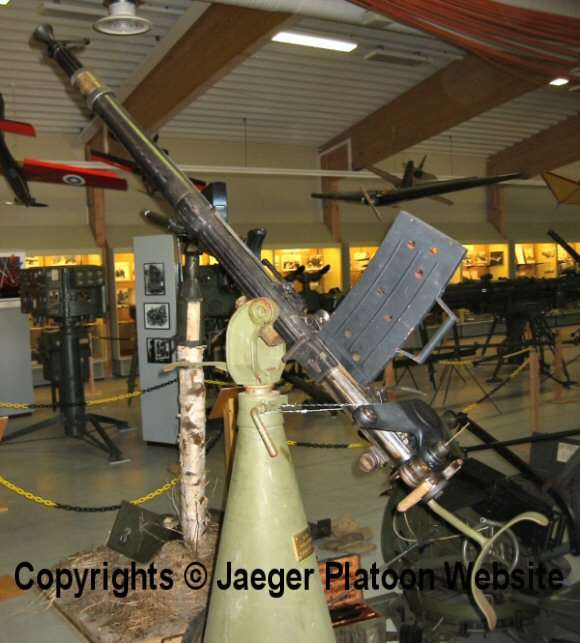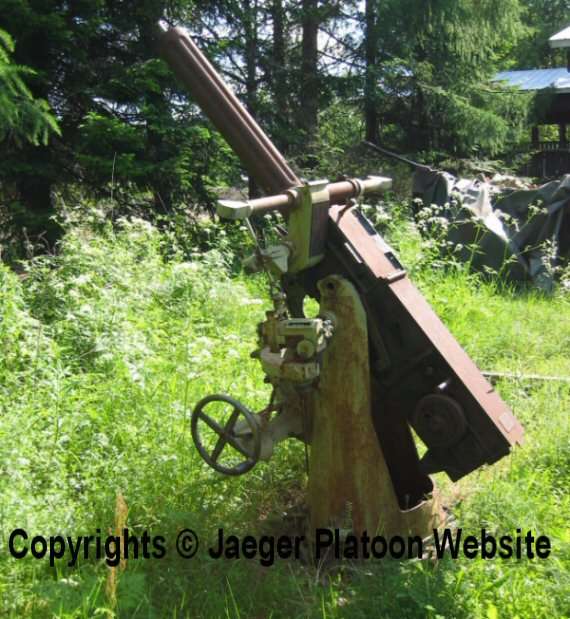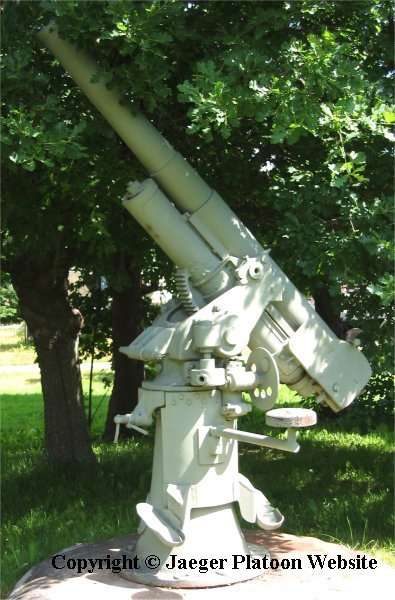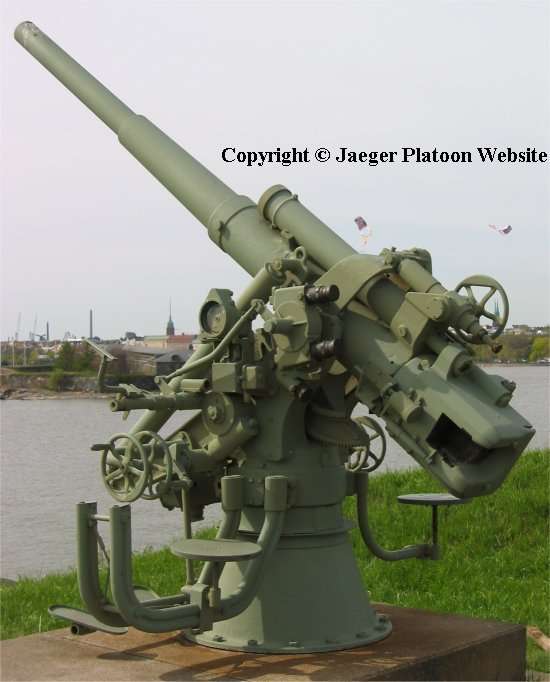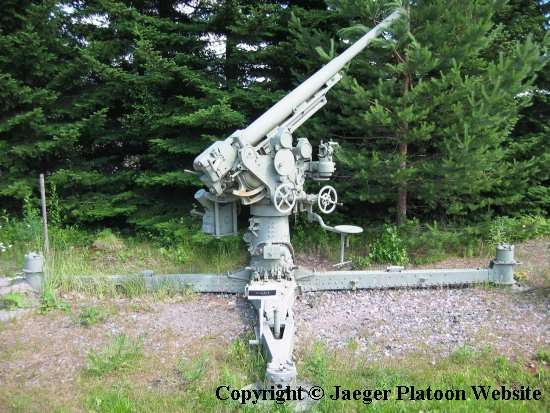The Finnish Army (Maavoimat) of the 1920’s: continued
The Finnish Army (Maavoimat) of the 1920’s:
This section will, by way of background and as an aid to understanding the impact of the changes made in the 1930’s, take a brief look at the Finnish Army Training and Mobilization Plans of the 1920’s. Training will be split in two, with one (rather short) section covering Conscript Training, and the other covering Army Officer and NCO training. We’ll also cover the background to the basic Army structure (Cadre vs Militia), Conscription (and the background to Conscription) and take a very quick and high level look at divisional organisation and size, infantry weapons and some of the other equipment that was available – all in the 1920’s.
Hope you find it interesting ….. and keep in mind that while this is an ATL, this particular section is OTL and firmly grounded, historically speaking, on what actually happened and/or was actually available. As far as the Maavoimat (Army) and Ilmavoimat (Air Force) go (and Suojeluskunta for that matter) I won’t be playing fast and loose with the historical facts until we get to 1930. So, to move on with the story and give you a little more background…..
Suomen Maavoimat (Finnish Army) Training in the 1920’s
Conscript Training
The diagram below provides a basic outline of Conscript Training. Generally, conscripts were kept in the Army for a period of 12 months. All conscripts completed an 8 week Basic Training Program, following which soldiers completed 8 weeks of Specialist Training and then 8 weeks of Unit Training. While soldiers were completing Specialist training, those conscripts selected for NCO Training completed the first phase of NCO training. Towards the end of this phase, Reserve Officers were selected from those in NCO Training. Reserve Officer and NCO Phase 2 training was completed in parallel, after which NCO’s and Reserve Officers rejoined the Soldiers for six months of training in war-time skills operating as a war-time unit.
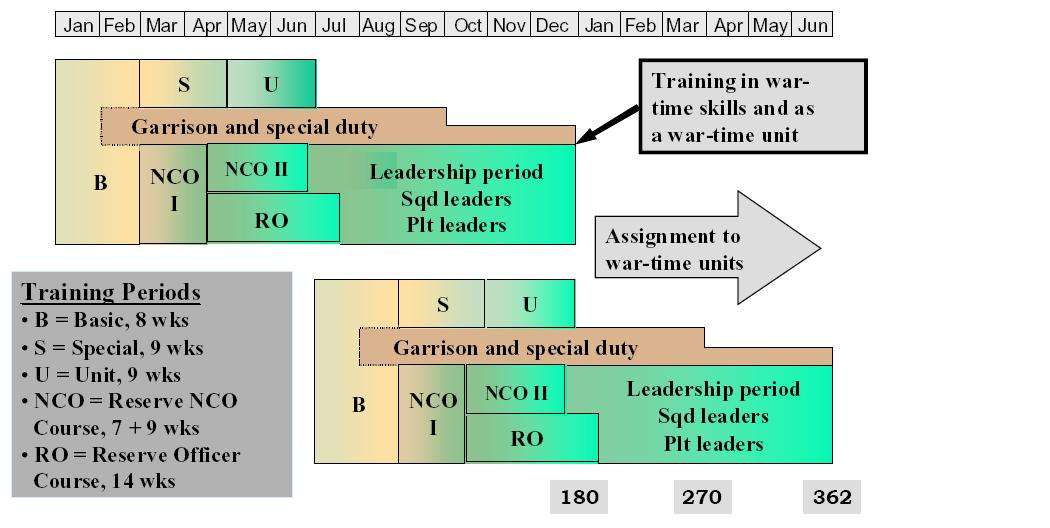
The Suomen Maavoimat did not generally have regular privates (although the Border Guard did, as did the more technical branches of the forces) and the 30,000 man strength of the 1920’s Maavoimat was made up primarily of Conscripts, Conscript NCO’s and Conscript Reserve Officers. Not having data available for the 1920’s, the best I can do is quote a table from 1939 on the Cadre Army’s strength. Kronlund gives a figure of 2,182 Regular Officers, 4,311 Regular NCO’s and 26,435 "Miehistö" (Conscripts). The vast majority of the last were, of course, Privates doing their 350-day long military service and conscripts being trained as Reserve NCOs and Reserve Officers (Roughly 75/20/5%, respectively). Once the Finnish system was well-established in the late 1920's, everything was built upon the conscript service; that's where the reserves were trained and that's where the future NCOs and officers, career as well as reserve, were found.
After a period of basic training common for all, those chosen for a "leadership role" entered a period in a "NCO school" and after that those chosen entered a period in a "Reserve Officer School". Meanwhile the privates and reserve NCOs trained together and the reserve officers would finally join them to use their newly acquired wisdom in practise. There were slight variations, but since 1935 the lengths of the periods were 17, 17, 17 and 16 weeks. Last but not least, the reservists - privates, NCOs and officers alike - often recived valuable training either in their local Suojeluskunta or in "reserve training exercises". For instance, between 1935 and 1939, more than 180 000 men took part in these, usually 1-2 week long, exercises (which were more common in the later 1930’s, not common at all in the 1920’s).
Regular NCOs -- known as kapitulanttialiupseerit -- graduated from a school of their own. Regular Officers were either reservists who enlisted for a fixed period at some point after the end of their conscription period or graduates of the three-year military academy Kadettikoulu founded in 1919. Of course, only the latter had any career prospects, and often the 'regular reservists' were just biding their time to apply for the Kadettikoulu. Those wishing to become career officers or NCOs would usually first continue their service as temporary (i.e. reserve, with pay) Officers or NCOs for a duration, typically a summer or up to a year until they could apply for entrance to the two-year "Kadettikoulu" or in the six-month schools for NCOs.
In other words you couldn't become a career officer without succesfully finishing your military service and you couldn't enter the "Kadettikoulu" if you had failed to make it into the "reserve officer school" during your conscript service. There were educational requirements for officers, i.e. in principle you had to have done the equivalent of your A-levels/baccalauréat/Abitur, but it sufficed with less. The career path of a regular NCO was simply a very low climb in the ranks; exceptions were not made until after the Winter War. Both officers and NCOs served until retirement after 20(?) years of service, i.e. there were no short-service Cadre Officers or NCOs.
The system did not work as well as it could, though due to economic restraints. In the 1920’s, much of the conscripts time, up to a third or even a half, was spent in unessential work or guard duties and there were not enough Officers and NCOs to meet the actual training needs. The quality of career Officer and NCO applicants was often less than desired (due to the rather poor pay, drab living conditions etc).
Officer Training in the Early Years (1917-1920)
After the abolition of the “Finnish” Army in 1905, military training had not been available in Finland and those desiring to enter the military had either to enter the Tsarist Russian Army or turn to the military of other European countries. With growing opposition to Russian rule and a growing desire for independence, when WW1 broke out the eyes of many Finns had turned to Germany, which gave rise to the Jaeger movement. In the autumn of 1917, some 60 Finnish Jaegers arrived from Germany and began to organize military training of Suojeluskunta units. There were not enough trained Jaegers available to provide officers for all the Suojeluskunta units and the need was seen to quickly organize and train Suojeluskunta Officers and Platoon Leaders.
The first independent Finnish officer training course was held in the small rural town of Vimpelin, with the course lasting from 28 Decemeber 1917 to 13 January 1918. On 12 January 1918 it was decided, based on the experience of the Vimpelin training course, to organize an even larger military training course in the Ostrobothnian town of Vöyri., which would provide 700 Suojeluskunta members with NCO and Ryhmä (Section or Squad)-leader training. The first students arrived on 26 January, only a couple of days before the Civil War began. Over February-March 1918 the numbers of students increased as and when trainees were assigned from units at the front. The course was headed by Jaeger Captain JH Heiskanen.
After the war, a variety of officers courses were conducted, the most famous are probably the officer cadet courses held in "Markovilla-village" in Viipuri. This was the program which became the backbone for future reserve officer training. The first course started on 1 April 1920 with 143 students and was run by Jaeger Captain Kosti Sundberg. The participants of this course were proud of it, and called themselves "Markovilla Officers". The best known of them was the late General of the Infantry Sakari Simelius (who went on to become CIC of the FDF between 1959 – 1965.
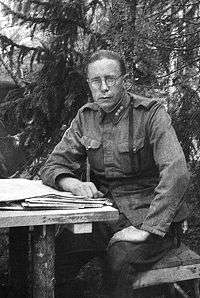
Colonel Simelius as the CO of JR 4 (Infantry Regiment) Summer 1944:
War College Courses abroad
Following Independence and after the war, there was a shortage of trained General Staff Officers, which would continue until Finland had set up its own military academy to train General Staff Officers. In the early years, the General Staff was largely made up of ex-Tsarist Russian Army officers and Officers trained by the Germans (the “Jägers”), many of whom had had no General Staff training) and Officers trained abroad through the 1920’s by the victorious powers, mainly France and Italy.
The Chief of General Staff, Oscar Enckell, set strict conditions for foreign study in the early years, which resulted in problems for officers in training. Language skills were also a problem, as very few Finnish Officers could speak French or Italian. In addition, the diversity among the Finnish Officer Corps caused problems, as among them there were several groups of personnel with entirely different backgrounds and levels of training: those trained in Russia, Jäger officers trained in Germany, and those who had risen in the ranks from civilian to active officers during the Finnish Civil War.
The higher-ranking Jäger officers in particular felt that the former Russian Army officers who held many of the most senior positions in the Suomen Maavoimat discriminated against them when opportunities for training were available. There were preconditions set for studying abroad: holding Rank of at most, a Captian, being Single and having sufficient school education. For the young and married Majors and Lieutenant Colonels with a Jäger background, these conditions were impossible to fulfill. There was also a political question: in which country the General Staff training was to be arranged, as the Jäger officers were politically more oriented towards Germany than towards the Entente states. A General Staff course in Germany was a politically touchy issue, as in the Versaille peace treaty Germany was forbidden to give such education, and in addition Finland had officially severed its relations with Germany as the German Empire had collapsed. The Jägers however still sympathized with the defeated Germany that had helped them in their hour of need.
The young Kinship Activist, Major Paavo Sivén, had organized two privately funded General Staff courses for Finnish Jäger officers in Germany in 1921-1923 and 1923-1925. The Chief of the Military Academy, Jäger Major General Aarne Sihvo, in 1926 approved the General Staff Officer Diplomas from the first course in Berlin as corresponding with the two-year curriculum of the General Department of the Staff College, but the Diplomas of the latter course were not approved. A court case regarding the validity of the second Berlin Course Diploma went all the way to the Supreme Court, with the Diplomas finally being confirmed in early 1930. Altogether, 13 Finnish officers had carried out General Staff studies in Berlin, Germany. After the "officer crisis" was resolved, Finland sent a number of higher-ranking Jäger officer to foreign Military Academies. A total of 46 Finnish military officers, including the future Defence Force Commanders Erich Heinrichs and Aarne Sihvo, studied in French and Italian military academies.
Kadettikoulu / Officer Training School (1919…)
There were many Officers without formal training and there was a real need for an Officers Training School. A Committee headed by Major General Hannes Ignatius was set up on 4 January 1919 to come up with recommendations for Officer Training. The Committee worked quickly and the new Finnish Officer Training School began operations on 25 January 1919. The new Academy was located in Helsinki and the initial length of the Officers Training was set as eighteen months. From 1930 (through to 1962 when it was further lengthened), the course took two years to complete. Specialized training was conducted in military schools organized and run by the Specialist Branches. Navy Officer-candidates were educated at the School until 1930, and Air Force Officer-candidates until 1929.
In 1930, the requirement to enter the Kadettikoulu (Officer Training School) was that the applicant had to be less than 25-years-old, have passed the Matriculation Examination, have a good reputation, be physically fit and in a good state of health as well as fit for the particular branch of the defense forces being applied for, and suitable for promotion as a reserve officer, but those requirements were interpreted loosely. From 1919 to 1923 the Kadettikoulu was located in what is now the Museum of Natural History. The building had previously served as a Russian Gymnasium. From 1923 to 1940 the Military Academy was located in Helsinki Munkkiniemi and then in Santahamina from 1940. The first Director of the Military Academy was Colonel Victor Rafael Schauman. The first three directors were all former students of the Finnish Cadet School [of the Imperial Russian Army, (acting 1821–1903)]. Jaeger Officers acted as teachers at the Kadettikoulu until 1945. The first three directors of the Finnish General Staff College were all former students of the Kadettikoulu.
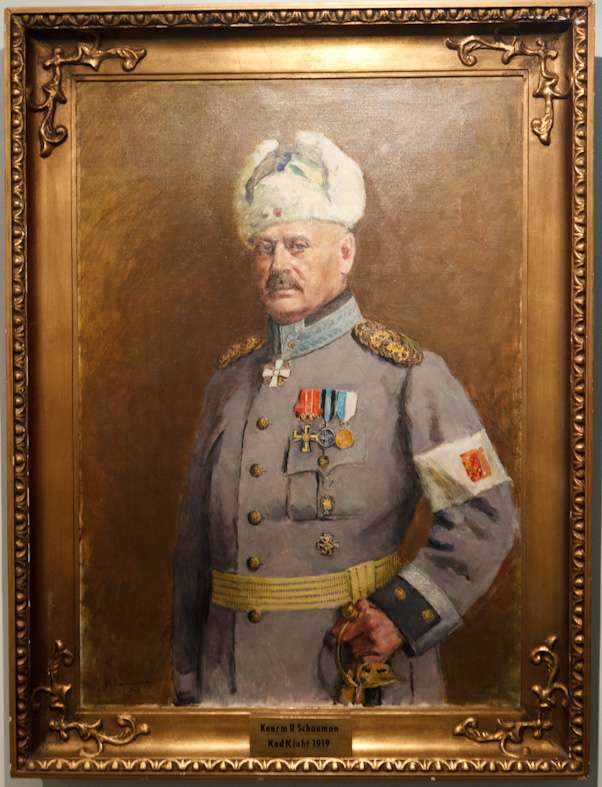
Major General Victor Rafael Schauman, Kadettikoulu Director 1919
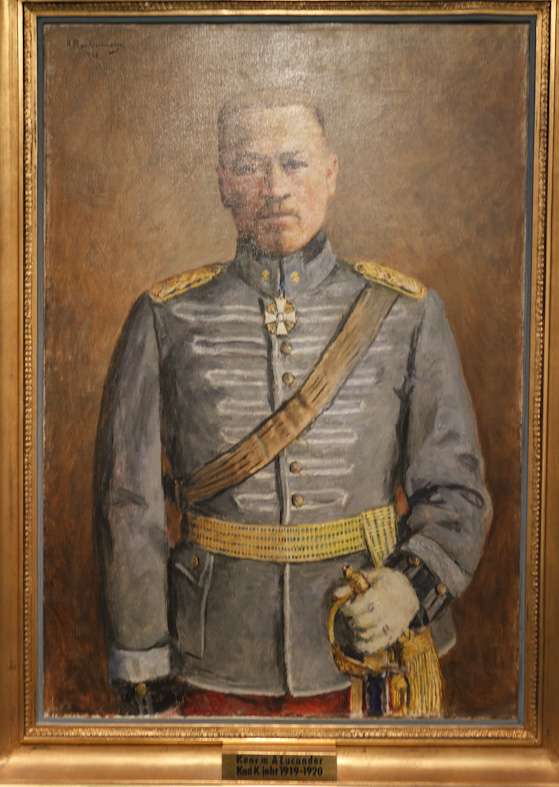
Major General A Lucander, Kadettikoulu Director 1919-20
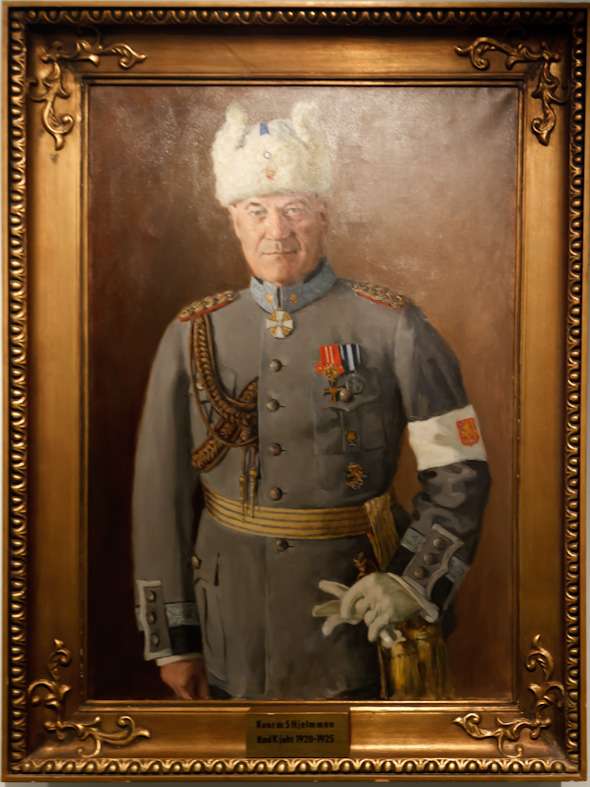
Major General S Hjelmman, Kadettikoulu Director 1920-25
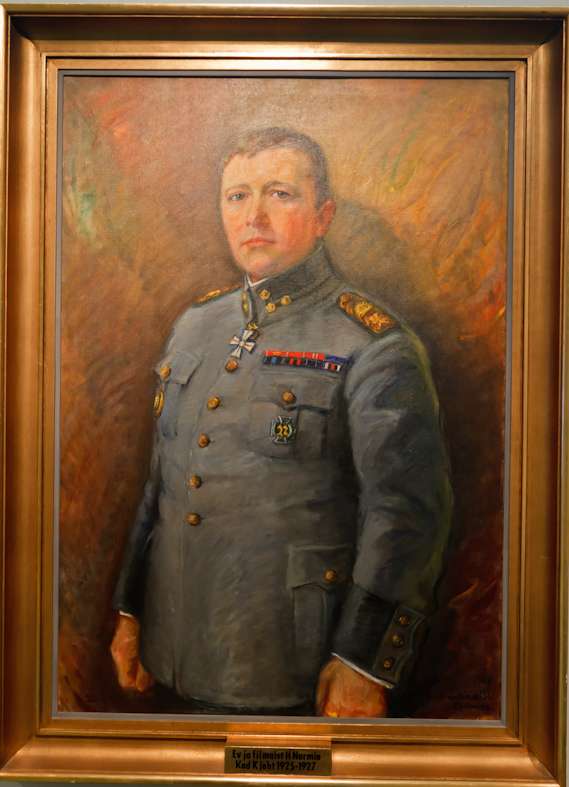
Colonel and Magister of Philosophy H Nurmio, Kadettikoulu Director 1925-27
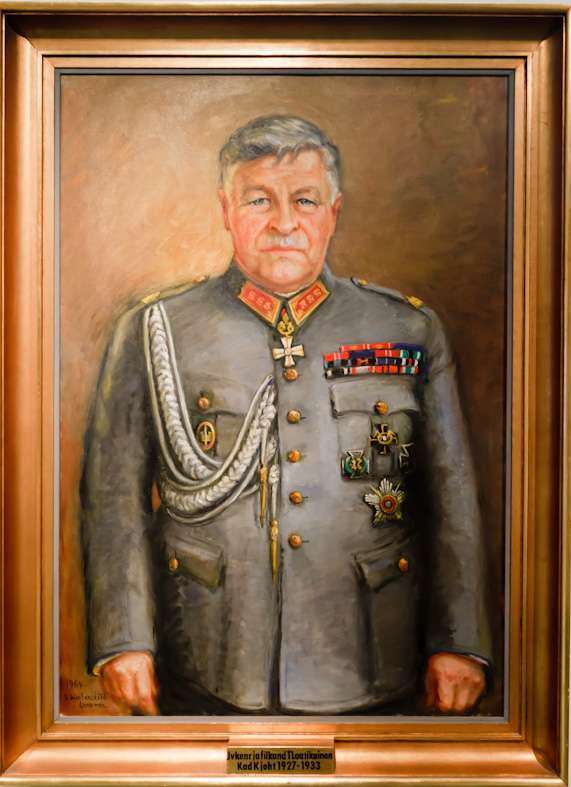
Infantry General and Candidate of Philosophy T Laatikainen, Kadettikoulu Director 1927-33
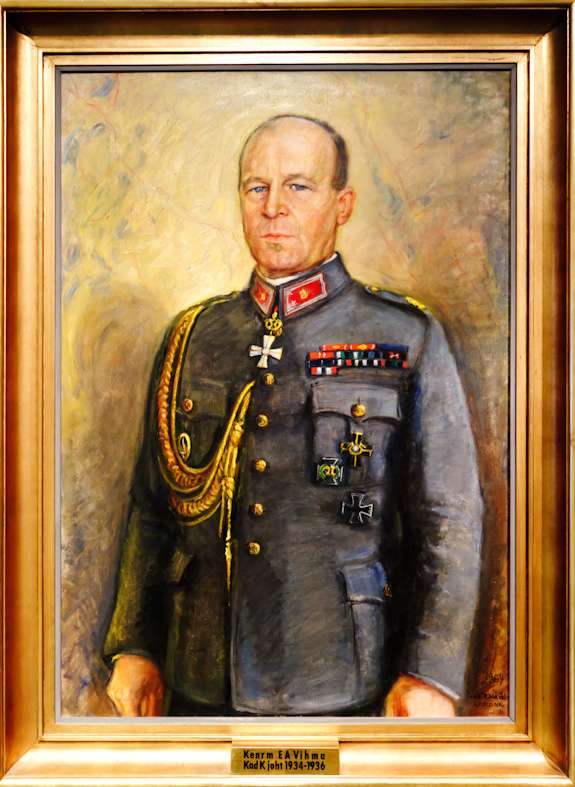
Major General E A Vihma, Kadettikoulu Director 1934-36
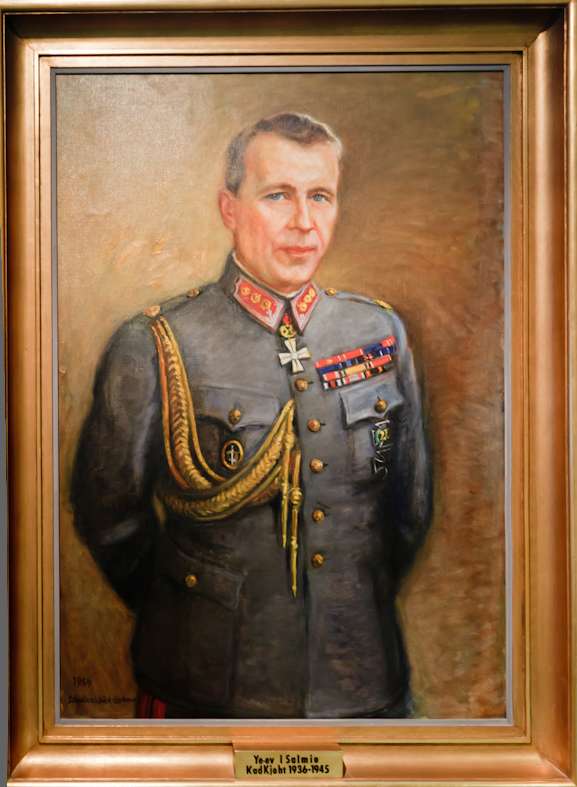
General Staff Colonel I Salmio, Kadettikoulu Director 1936-45
By year 1939 the Kadettikoulu had been training junior Officers for 20 years and there were plenty of them. However, the highest positions in the defense forces were firmly in the hands of the Jägers, the graduates of "Viipurin Upseerioppilaskurssi" of 1919 and some who had served in the old Imperial Russian army (prominent among these were Mannerheim and Nenonen). The only Officer who had graduated from the Kadettikoulu after 1919 to command a division (10.D) in WW2 was Colonel Kai Savonjousi. Savonjousi was also the first Kadettikoulu officer to reach Major-General's rank (in 1949) although before him another Kadettikoulu officer, Svante Sundström, had been promoted to Kontra-Amiraali (rear-admiral) in 1943.
Maavoimat Taistelukoulu / Army Combat School (1927 on…)
The Army Combat School was set up in 1927 at a location north-east of Vyborg to conduct military leadership, battle training and combined arms combat courses for company commanders and platoon leaders. The school’s courses were based on the tactics taught at the Staff College, and were taught by Jaeger Maj. Hannes Olkkonen, who was also the school's first director. Students were generally Captains and Lieutenants, as well as NCO’s who acted or might have to act as Company Commanders and Platoon Leaders. All Infantry Officers attended this course.
Sotakorkeakoulu / General Staff College (1923…..)
In 1919, direction was given to establish the Sotakorkeakoulu (General Staff College) in order to provide General Staff training for higher ranking Officers. In those uncertain times, the institute was not founded immediately but instead, several officers, including Jäger Major A. E. Martola, were sent to study at foreign Staff Colleges. The project of establishing the Staff College resurfaced in 1923. A Committee was set up to consider advanced officers' training. The report of the Committee of May 1923 proposed the establishment of a Sotakorkeakoulu, one of the reasons (among others) being the need to develop original tactics applicable to Finnish circumstances and terrain. At the same time, Colonel V. P. Nenonen, the Inspector of Artillery, had taken the initiative to organize a higher military-technical educational program at the Institute of Technology. This initiative had progressed rapidly and in the autumn of 1923, some 18 Officers began studies at the Institute of Technology in Helsinki.
The actual establishment of the Sotakorkeakoulu gained new momentum when in April 1924 the Defense Revisions Committee presented a strong statement in support of higher military education. The petition resulted in the Government agreeing almost immediately to the motion for the establishment of a temporary Sotakorkeakoulu. The Sotakorkeakoulu began teaching in Helsinki on 11 March 1924 in the former barracks of Uusimaa Marksmen Battalion at Liisankatu. The General Staff College’s first Director was Colonel Aarne Sihvo, who at the time was actually studying at the Italian Military Academy. Major General Nenonen was initially nominated as the interim Director, with General Staff Major Martola as his Assistant. The school's tenured teachers were all foreign: from Sweden, Italy, France and Great Britain. 34 officers were assigned to the first course. In addition, those students who had started their studies at the Institute of Technology continued their education at the Sotakorkeakoulu from the autumn of 1925.
The selection criteria for the Sotakorkeakoulu was stringent and students had to work extremely hard. Accordingly, the graduates were considered the intellectual elite of the Defense Forces. At some point after graduation the successful students were granted the status of Yleisesikuntaupseeri (General Staff Officer) and were allowed to add the prefix Yleisesikunta- before their rank, for example Yleisesikuntaeversti for a Colonel (or just Ye-eversti for short). OTL, before World War II the Sotakorkeakoulu had trained 370 General Staff Officers in 15 General Department courses, five Military Technical Department course, two Naval Department courses and one Air Warfare Department course. (46 officers also carried out corresponding studies abroad, mainly in Sweden, Germany, France and Italy). Courses were generally of two years' duration, but the Military Technical Department Courses lasted four years. The Sotakorkeakoulu was made a permanent institution in 1930.
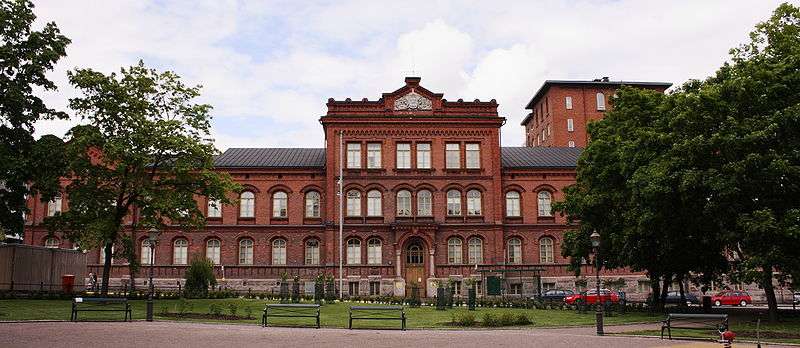
Former Military Academy in Kruununhaka, Helsinki, Finland
Suomen Maavoimat Military Schools through the 1920’s
Sotakorkeakoulu (SKK) (General Staff College) Helsinki
Taistelukoulu (TK) (Combat School) Viipuri
Kadettikoulu (Kad.K) (Officer Cadet School) Munkkiniemi (Helsinki)
Sotateknillinenkoulu (STK) (Military Technical School) Helsinki
Merisotakoulu (MSK) (Naval Combat School) Suomenlinna (Helsinki)
Ilmailukoulu (Ilm.K) (Aviation School) Kauhava
Reserviupseerikoulu (RUK) (Reserve Officer School) Hamina
Aseseppäkoulu (ASK) (Gunsmith School) Helsinki
Kengityskoulu (Keng.K) (Shoeing School) Hämeenlinna
Sotilashallinnollinenkoulu (SHK) (Military Administrative School) Helsinki
Kaasusuojelukoulu (Kss.K) (Gas Protection School) Viipuri
Part of the education was also arranged within the specialized branches of the defence forces, e.g. Combat Engineer, Signals, Artillery, Quartermaster, etc. who had also developed internally their own specialised training courses in addition to their responsibilities for conscript training. There was a shortage of everything as funding was scarce and all sorts of improvisations and innovations were used to compensate for the lack of resources. But the new Officer Corps was highly motivated and had a pioneering spirit, hence the system was not rigid but rather was adaptive. For example, the famous motti tactic of the Winter War was not invented by theorists or taught at the pre-war Staff College, it was created in combat by innovative thinking and boldly utilizing opportunities that arose (an approach which had still benefited from sound professional officer training and correct appraisals of the situation and the opportunities).
A perhaps-typical example would be General Jarl Lundqvist, who completed the following courses:
Field Artillery School (Tykistön Ampumakoulu) in 1920
Course at "Ecole Militaire de l'Artillerie de Fontainebleau" between 1 October 1920 and 20 August 1921,
General Staff Course in gas protection (Ylemmän Päällystön Kaasukurssit) in 1927,
Course at "Centre d'Etudes Tactiques d'Artillerie" in Metz between 1 June - 9 July 1928,
Course "Ecole Superieure de Guerre" in Paris between 1 November 1928 - 6 June 1930 and
Observer Training in France in 1934
Lundqvist was promoted from Captain to Major in 1920, to Lieutenant Colonel in 1925, to Colonel in 1928, to Major General in 1936.
Mobilization Plans of the 1920’s
The Cadre mobilization system was used in the Suomen Maavoimat from April of 1918 into the 1930’s. Just as in later mobilization systems, the country was divided into military districts. On mobilization a number of units would be formed in each of these districts. In this system (which was based on the German mobilization system and had been introduced by German Officers assisting the Finns immediately after the end of the Civil War) each of the wartime Regiments had an active peacetime Armed Force battalion sized unit as Cadre (this Battalion was made up of a core of Regular Army Officers and NCO’s with the bulk of the men being Conscript Officers, NCO’s and Soldiers) around which the wartime unit ,when mobilized, would be formed by filling up the units and ranks with reservists.
The first (and ambitious) mobilization plan made in 1918 would have formed up an Army of 9 Divisions (with a total of 27 Infantry Regiments), but at that time Finland didn't even have half of the needed trained troops or weapons for an Army of that size. The early plans were then revised to a more realistic size of only three divisions. As the Maavoimat trained up additional Conscripts on a yearly basis, the numbers of trained Reserves progressively grew larger and the Army structure and mobilization plans were revised to match. In 1921 the Army strength on mobilization was re-set to 6 divisions and 1 Jaeger brigade, but the Finnish military planners had come to the conclusion that 10 Divisions would be needed in order to provide the capability for waging an effective defensive war. As indicated in the table below, the Maavoimat’s mobilization strength grew progressively through the 1920’s:
1919: 110,000 men
1925: 150,000 men
1930: 200,000 men
In 1927 Finland finally had the trained military resources for 7 divisions, but the Defense Review of that year indicated the need for a future wartime Army of 13 Divisions. As indicated earlier, the quantity of weapons available was always a problem, and due to limited funds being available for defence, weapons constantly lagged behind the numbers of trained soldiers available on mobilization. With every year, there were more and more trained soldiers for whom equipment needed to be issued upon mobilization. Prior to the early 1930’s, the numbers of men called up for compulsory military service at the age of 21 was restricted due to the limited military equipment available. While around 26,000 men were eligible each year, only around 10,000 per year were trained due to financial and equipment limitations. Soldiers and NCO’s were retained in the Reserve until the age of 40, Officers until the age of 60. A secondary (and mostly untrained with the exception of Suojeluskunta members) reserve existed of all young men (trained or untrained) between 17 and 21 years old.
Over the 1920’s, there was no active training of Reservists by the Maavoimat. This was a role that the Suojeluskunta filled with their training programs for members. In essence, the Suojeluskunta was the “active reserve” and maintained, as we will see when we look at the organisation, an active and fairly comprehensive training program that meshed more and more closely with Maavoimat training as time passed.
The Suojeluskunta played an important role in the Maavoimat mobilization plans throughout the 1920’s. Suojeluskuntas in border-areas were, in the event of war, to form up and fight against the invading enemy in their own areas, while the remaining Suojeluskunta units would have formed additional reserve units which would fight as units made up solely of Suojeluskunta personnel. Other non-Suojeluskunta Reserves would form up as regular Army units. There were problems with this mobilization system - it was centralized (large units were to be formed up in a small number of locations) and its ability to effectively mobilize an ever growing Army was questionable. Large numbers of troops and vehicles gathering for mobilization would have made good targets for an enemy air force and successful sabotage against some of the few large depots, in which the equipment was stored, could have been devastating.
Fortuitously perhaps, the mobilization system was to be changed in the early 1930’s, as we will see.
Suomen Maavoimat (Finnish Army) Infantry Weapons of the 1920’s
The story of the new service rifle of the Suomen Maavoimat is a good example of the internal situation within Finland, the relations between the Suojeluskunta (Civil Guards) and the Maavoimat and the way new innovations were ultimately taken and used. After the Civil War, Finland was filled with large numbers of captured Russian Mosin M1891 rifles, while significant numbers of other rifle types were also present. Unfortunately, while the numbers of 7.62mm Mosin-Nagant M/1891 Rifles in the Finnish inventory after the Civil War were large, many of the rifles in the depots were in very poor shape. In addition, the old "three line rifle" was deemed an unsatisfactory service rifle for the future by both the Maavoimat and the Suojeluskunta.
Meanwhile limited budgets and the antimilitaristic attitude of the SDP in the 1920’s ensured that the Maavoimat would not be able to purchase a totally new rifle for the whole army in the near future. In addition to constant purchases of these rifles from foreign sources through the 1920’s, a large scale re-fitting program was instituted and a new committee was set up and tasked with agreeing on upgrades to the Finnish service rifle based on the existing design. The aim of the project was not to develop a totally new weapon, but rather to develop a cost-efficient upgrade program that could be used to update the existing stock of rifles but utilizing as many of the existing parts of the Mosin-Nagant M1891 Rifle as possible.

While the old-model Mosin-Nagant remained in production in the Soviet Union, Finns took this battle-proven weapon as a starting point and then carried out a series of upgrades to produce a new family of more accurate and reliable service rifles. Finnish industry didn't make completely new rifles - for example receivers and bolt parts (with the exception of extractors and a small number of cocking pieces made by Sako) were never manufactured in Finland. Finnish industry basically manufactured parts for these rifles to allow replacing worn barrels, broken parts and assembling complete rifles from spare parts.
But while the Maavoimat bureaucracy’s progress lagged on the project due to a lack of funds through the early 1920s, the Suojeluskunta had initiated a similar parallel project of their own. the Suojelskunta had already established a new weapons workshop in the Riihimäki metallurgical industry area to assemble and produce their new rifle that could then be sold privately, no matter what the outcome of the project was. This new company was called Suojeluskuntien Ase-Ja Konepaja Osakeyhtiö (SAKO). With new barrels produced by Schweizerische Industrie-Gessellschaft, the old and venerable SIG and the new SAKO combined their expertice to produce the Finnish M/24, M/28 and then the M28/30 rifle that was in production between 1928-1933 (with a total production of roughly 30 000 weapons).
In parallel, the Army and the State Rifle Factory had been working together and had designed the M/27 Rifle included some notable practical differences from the Suojeluskunta/SAKO designs and which was produced by Tikkakoski and Valtion Kivääritehdas (State Rifle Factory) with a total production of 60 000 rifles. In many important details the development work done by Army and development work done by the Suojeluskunta were heading in very different directions - even the goals of their development work were somewhat different – the Army had its focus on getting a more practical service rifle, while the Suojeluskunta was more focused on developing as accurate rifle as possible. The best features of the Army and Suojeluskunta rifle design work were not united into the same rifle until the M/39 model.
The most important differences between theM/27 and M/28 were:
- Different front sight design: The M/27 could be adjusted using only a special tool, the M/28 (designed by Harry Mansner for Sako) could be adjusted with normal screw driver.
- Different rifle stock designs: The M/27 stock had several versions and early versions had durability issues, which resulted in the introduction of a heavier stock version. No such problems existed with the M/28 stock (althought the handguard of the M/28 stock was pretty flimsy).
- Differences in trigger mechanism: The M/27 rifle had the M/27 trigger, while the M/28 had its trigger model equipped with an additional spring (already added by Sako & the Suojeluskunta to the M/24 rifle) to provide a better two-stage trigger.
- Bolt connector wings and modification (grooves) made to rear receiver for this in the M/27.
- Different nose cap (the M/27 had two versions, early and late) and barrel ring versions in the M/27 and M/28.
- Barrel diameter: The M/28 has a notably thicker barrel than M/27.
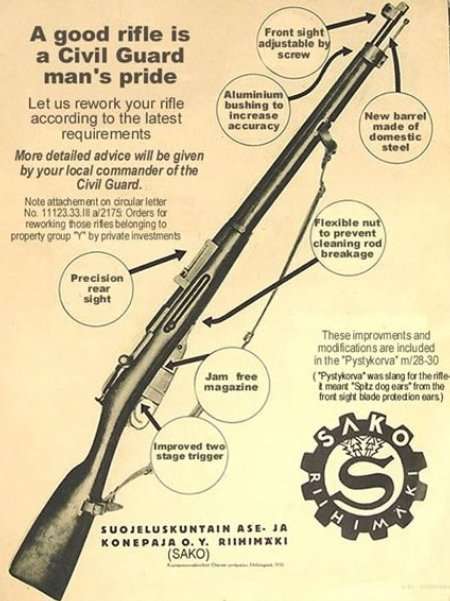
This was perhaps the only significant weapons project of the 1920’s, and as we have seen it only really got off the ground in the late 1920’s. However, there was one private project which we will look at in a little more detail (and cover more fully in a later section on the weapons development and acquisition programs of the 1930’s). This was the design and early development of what was to become known as the Suomi M-31 SMG. This was the work of Aimo Johannes Lahti, a self-taught gunsmith and the leading weapons designer in Finland between the wars.
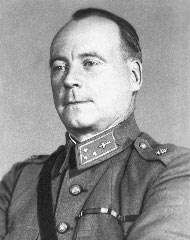
Aimo Johannes Lahti was a self-taught gunsmith and the leading weapons designer in Finland between the wars. He and his design team either improved existing obsolete Tsarist-era weapon systems or developed new ones. During WWII the Suomen Maavoimat (Finnish Army) used his designs for it´s official pistol, service rifle, MG, LMG, SMG, antitank rifle and also several other less common weapons his group had designed.
An aside on Aimo Johannes Lahti, of whom we will see more in later posts…..
Aimo Johannes Lahti (April 28, 1896, Viiala - April 19, 1970, Jyväskylä) was a self-taught Finnish weapons designer. Out of the 50 weapons that he designed, the best known is the Suomi M-31 SMG. Other well-known weapon designs include the Lahti-Saloranta M/26 LMG, Lahti L-35 pistol, and Lahti L-39 anti-tank rifle. His work is considered decisive in defending Finnish independence and increasing trust in the reliability of domestic weapons produced there.
Aimo Lahti was born in Viiala in 1896, to a family of five. He had a safe but apparantly somewhat wild childhood. Lahti did not enjoy school and left after the 6th year of elementary school. He started working in the Viiala glass factory when he was 14 years old. In the same year, he bought his first weapon, a Berdan rifle, with five marks he had earned working in the factory. Lahti was fascinated by the rifle’s mechanism and visited a local gunsmith with whom he examined the weapon closely. Aimo Lahti visited him any number of times, becoming familiar with weapon mechanisms. He served his conscription in central Finland’s regiment over 1918 and 1919. On October 20, 1919 he married his wife, Ida, with whom he had his only child. His son, Olavi Johannes Lahti, was later a pilot in the Suomen Ilmavoimat (Finnish Air Force) and died in 1944.
After working for the railways, Lahti joined the Finnish Army as a Master Armorer in 1921. He was influenced in this decision by a Captain Rosenholm. In 1922 he started to design the Suomi M-31 SMG after examining the Bergmann MP18, which had many design problems as well as being expensive. The new design was revolutionary due to the excellent reliability, accuracy and rate of fire. The first prototype of the Suomi SMG was completed in 1922. About 100 Suomi M/26 submachineguns were manufactured in 1925 – 1926 but manufacturing of Suomi M/31 submachinegun didn't start in earnest until 1931 (this will be covered in more detail in a subsequent series of posts on weapons design, manufacturing and procurement). After the prototypes were made, Lahti was ordered to work under the control of the Ministry of Defence and to design a light machine gun, which eventually would become the Lahti-Saloranta M/26. He then improved the Mosin Nagant rifle (as we covered earlier) which later was issued to the Finnish Army as their service rifle.
Looking ahead a little, in 1932 Lahti and the Ministry of Defence signed two important agreements regarding Lahti's earnings and other economic benefits. It also gave the government the rights to use and sell his designs. In the same year, he had had an offer to move to an American weapon company. He was offered a check for 3 million marks and a 5% commission on the weapons that would have been produced in the USA. On the same day the Ministry revised his older contract so that Lahti received more benefits and rights to his inventions and he therefore felt that moving to the USA was noy enough of a better offer to justify accepting it. Aimo Lahti enjoyed a Finnish Army’s Major General’s pension until his death in 1970 in Jyväskylä at the age of 74.
And a quick take on the Early History of Mortars in the Finnish Army
The Mine-thrower was the predecessor of today’s mortars, with a history starting with the Russian-Japanese war of 1904-1905. During that war, the Japanese military not only proved that mortars were well suited for destroying fortifications, but they also were the first ones to use a weapon which could be considered a mine thrower. This first mine thrower had a reinforced bamboo tube loaded with small charge of black powder and it was used to fire explosive charges into Russian trenches. The introduction of this weapon was noted n other countries and inspired the Germans to start development work based on this concept. The first German mine-thrower was introduced in 1908. When World War 1 started, the German military had 44 heavy (250-mm) and 166 medium (170-mm) mine-throwers in its use. The German Army considered its minenwerfer demolition weapons, so they were issued to engineer units. During World War 1, German mine throwers proved extremely successful so their numbers were considerably increased.
By the time World War 1 ended the German military had issued some 1,200 heavy (180-mm, 240-mm and 250-mm) mine-throwers and about 2,400 medium (170-mm) mine throwers. Besides being effective against enemy infantry, both heavy and medium mine thrower proved effective also against field works of various types. The most numerous of the mine throwers in German use during World War 1 proved to be the light (76-mm) mine thrower developed only during the war - some 12,400 were manufactured before World War 1 ended. Practically all other counties taking part in World War 1 developed their own mine-throwers or at least adopted mine thrower designs developed by their allies.
During the Finnish Civil War of 1918 a few Russian 91-mm mine-throwers saw use. The Finnish White Army captured four of these mine-throwers early on and used them to equip a Miinaheitinyksikkö (Mine Thrower Unit). This unit fought in Vilppula and Ruovesi in February and took part in the White offensive towards Tampere until they ran out of ammunition. Also, the Finnish Red Guards and Russian troops may have used some mine throwers in Finland, but no evidence of this remains. In 1918, Finland bought 18 German 76-mm mine throwers, which remained in Finnish use until replaced with 81-mm mortars before World War 2.
Stokes Trench Mortars and Brandt-Stokes Mortars
For practical purposes the mortar is a lighter and simpler infantry weapon that was based on the mine-thrower. While the Germans had been the ones to develop the first mine throwers, the basic design of classic mortars was based on the design work of the British World War I era designer, Wilfred Stokes. Stokes was the manager of a successful engineering company called Ransomes and Rapier, which had concentrated on the construction of farming machinery and steam engines prior to WWI. In 1915 he started developing a trench mortar design of his own. While most mine-thrower / trench mortar designs of that time were either light but primitive, or useful but heavy, the design that Stokes come up with was both light and exceptionally effective. His three inch trench mortar consisted of only three parts – the design still found in most mortars today - barrel, base plate and bipod.
The barrel rested on a base plate, which took the recoil, and the whole weapon was supported by a bipod, which contained the elevation adjustment in the form of screw elevation gear. The lower end of the barrel was closed and had a fixed firing pin, which fired the primer for the propellant charge when the mortar bomb was dropped down the barrel. The Mortar Bomb was cylinder shaped and made from cast iron. It's rear end held the basic propellant charge - which was packed in a 12-gauge shotgun shell. The original fuse used in the bombs was time-delay fuse with a delay of nine seconds and the fuse was based on that originally used in the Mills bombs (British hand grenades). The three-inch Stokes trench mortar went through a series of tests and after some improvements it was introduced into use by the British Army in August 1915. It proved an exceptionally good weapon and soon gained popularity among British soldiers, being produced in large numbers before the end of World War 1.
Stokes continued developing fuses for mortar shells and introduced a 4-inch version of this trench mortar, which was adopted for use by the British Army during the war. While Stokes trench mortars were the best of the mine throwers and trench mortars used in World War 1 they still had room for improvement. The biggest problem of the Stokes trench mortar was the wide dispersion of bombs. After WW1 development continued with the m/1920 and m/1921 Stokes mortars, both of which proved commercially unsuccessful. Finally in 1924 French engineer Edgar William Brandt developed a new kind of mortar shell and also further improved the Stokes mortar. The newly introduced mortar shell had an accuracy dispersion of only about 1%, so it was more then satisfactory for use. This new mortar became known as the Stokes-Brandt model 1924-1925 mortar and sold extremely well. By World War 2 81-mm Brandt-Stokes mortars and their derivative offspring had become part of the standard weaponry for armies of practically all combatant countries.
Initial Purchase of Stokes-Brandt Mortars for the Finnish Army
In Finland the new 81-mm Stokes-Brandt mortar attractedthe attention of Major General Vilho Petteri Nenonen in 1924. Thanks to his friend, the British General Sir. W.M. Kirke, and reading about the test shooting results of the mortar Nenonen became interested in the Stokes-Brandt mortar. Once he familiarized himself with the weapon he soon realised that the Stokes-Brandt mortar was just what Finnish infantry needed as a light support weapon. He organised for two 81-mm mortars and some ammunition to be bought and tested over the spring and summer of 1926. In these tests the 81-mm Brandt-Stokes mortar proved so useful and effective that it confirmed his determination to acquire them for the Finnish Army. However, as the Stokes-Brandt mortar was a relatively new weapon, doubts existed among some of his fellow officers. Their was a very real danger was that the whole idea might end up being buried in some committee (as happened with so many planned weapons purchases of the Finnish Armed Forces at that time). In the autumn of 1926 Nenonen got his chance, when he was pointed as substitute commander for the Finnish Army. He used his position as substitute to effectively cut through the red tape and personally ordered the purchase of 70 Stokes-Brandt mortars and ammunition for them. Once these first 81-mm mortars (the 81 Krh/26) had been introduced into use by the Finnish Army they were followed by several Tampella-manufactured versions. Over the next few years the 81-mm Stokes-Brandt mortar became a household name in armies all over the world.
Finland sold these 72 mortars abroad before World War Two. Officially they were sold to Estonia in 1936, but they may have ended up elsewhere (there were strong suspicions among the Left that these Mortars had somehow made it off the Army books and journeyed to Spain with the Finnish Volunteer Division, a suspicion that was never actually confirmed). They provided an important starting point not only for Finnish Army, but also to Tampella, which got into the development and manufacturing of Mortars due to this. And thanks to Nenonen, the Finnish Army became one of the first armed forces in the world to include 81-mm mortars as part of its standard weaponry - but did this have any real significance? As we will see in later posts, the early adoption of the morat certainly gave Finnish Army enough time to test, learn and thoroughly hone its methods for using mortars in forests and on the Karelian Isthmus to near perfection before World War 2. In addition, the use of Mortars in the Spanish Civil War by the Finnish Volunteer Division resulted in the Army learning a number of practical lessons, including the need for a heavier Mortar, a lesson which resulted in the Tampella designed and manufactured 120mm Mortar being introduced – again, something that will be covered in more detail as we look at weapons design, manufacturing and procurement in the 1930’s).
The Finnish Army (Maavoimat) of the 1920’s:
This section will, by way of background and as an aid to understanding the impact of the changes made in the 1930’s, take a brief look at the Finnish Army Training and Mobilization Plans of the 1920’s. Training will be split in two, with one (rather short) section covering Conscript Training, and the other covering Army Officer and NCO training. We’ll also cover the background to the basic Army structure (Cadre vs Militia), Conscription (and the background to Conscription) and take a very quick and high level look at divisional organisation and size, infantry weapons and some of the other equipment that was available – all in the 1920’s.
Hope you find it interesting ….. and keep in mind that while this is an ATL, this particular section is OTL and firmly grounded, historically speaking, on what actually happened and/or was actually available. As far as the Maavoimat (Army) and Ilmavoimat (Air Force) go (and Suojeluskunta for that matter) I won’t be playing fast and loose with the historical facts until we get to 1930. So, to move on with the story and give you a little more background…..
Suomen Maavoimat (Finnish Army) Training in the 1920’s
Conscript Training
The diagram below provides a basic outline of Conscript Training. Generally, conscripts were kept in the Army for a period of 12 months. All conscripts completed an 8 week Basic Training Program, following which soldiers completed 8 weeks of Specialist Training and then 8 weeks of Unit Training. While soldiers were completing Specialist training, those conscripts selected for NCO Training completed the first phase of NCO training. Towards the end of this phase, Reserve Officers were selected from those in NCO Training. Reserve Officer and NCO Phase 2 training was completed in parallel, after which NCO’s and Reserve Officers rejoined the Soldiers for six months of training in war-time skills operating as a war-time unit.

The Suomen Maavoimat did not generally have regular privates (although the Border Guard did, as did the more technical branches of the forces) and the 30,000 man strength of the 1920’s Maavoimat was made up primarily of Conscripts, Conscript NCO’s and Conscript Reserve Officers. Not having data available for the 1920’s, the best I can do is quote a table from 1939 on the Cadre Army’s strength. Kronlund gives a figure of 2,182 Regular Officers, 4,311 Regular NCO’s and 26,435 "Miehistö" (Conscripts). The vast majority of the last were, of course, Privates doing their 350-day long military service and conscripts being trained as Reserve NCOs and Reserve Officers (Roughly 75/20/5%, respectively). Once the Finnish system was well-established in the late 1920's, everything was built upon the conscript service; that's where the reserves were trained and that's where the future NCOs and officers, career as well as reserve, were found.
After a period of basic training common for all, those chosen for a "leadership role" entered a period in a "NCO school" and after that those chosen entered a period in a "Reserve Officer School". Meanwhile the privates and reserve NCOs trained together and the reserve officers would finally join them to use their newly acquired wisdom in practise. There were slight variations, but since 1935 the lengths of the periods were 17, 17, 17 and 16 weeks. Last but not least, the reservists - privates, NCOs and officers alike - often recived valuable training either in their local Suojeluskunta or in "reserve training exercises". For instance, between 1935 and 1939, more than 180 000 men took part in these, usually 1-2 week long, exercises (which were more common in the later 1930’s, not common at all in the 1920’s).
Regular NCOs -- known as kapitulanttialiupseerit -- graduated from a school of their own. Regular Officers were either reservists who enlisted for a fixed period at some point after the end of their conscription period or graduates of the three-year military academy Kadettikoulu founded in 1919. Of course, only the latter had any career prospects, and often the 'regular reservists' were just biding their time to apply for the Kadettikoulu. Those wishing to become career officers or NCOs would usually first continue their service as temporary (i.e. reserve, with pay) Officers or NCOs for a duration, typically a summer or up to a year until they could apply for entrance to the two-year "Kadettikoulu" or in the six-month schools for NCOs.
In other words you couldn't become a career officer without succesfully finishing your military service and you couldn't enter the "Kadettikoulu" if you had failed to make it into the "reserve officer school" during your conscript service. There were educational requirements for officers, i.e. in principle you had to have done the equivalent of your A-levels/baccalauréat/Abitur, but it sufficed with less. The career path of a regular NCO was simply a very low climb in the ranks; exceptions were not made until after the Winter War. Both officers and NCOs served until retirement after 20(?) years of service, i.e. there were no short-service Cadre Officers or NCOs.
The system did not work as well as it could, though due to economic restraints. In the 1920’s, much of the conscripts time, up to a third or even a half, was spent in unessential work or guard duties and there were not enough Officers and NCOs to meet the actual training needs. The quality of career Officer and NCO applicants was often less than desired (due to the rather poor pay, drab living conditions etc).
Officer Training in the Early Years (1917-1920)
After the abolition of the “Finnish” Army in 1905, military training had not been available in Finland and those desiring to enter the military had either to enter the Tsarist Russian Army or turn to the military of other European countries. With growing opposition to Russian rule and a growing desire for independence, when WW1 broke out the eyes of many Finns had turned to Germany, which gave rise to the Jaeger movement. In the autumn of 1917, some 60 Finnish Jaegers arrived from Germany and began to organize military training of Suojeluskunta units. There were not enough trained Jaegers available to provide officers for all the Suojeluskunta units and the need was seen to quickly organize and train Suojeluskunta Officers and Platoon Leaders.
The first independent Finnish officer training course was held in the small rural town of Vimpelin, with the course lasting from 28 Decemeber 1917 to 13 January 1918. On 12 January 1918 it was decided, based on the experience of the Vimpelin training course, to organize an even larger military training course in the Ostrobothnian town of Vöyri., which would provide 700 Suojeluskunta members with NCO and Ryhmä (Section or Squad)-leader training. The first students arrived on 26 January, only a couple of days before the Civil War began. Over February-March 1918 the numbers of students increased as and when trainees were assigned from units at the front. The course was headed by Jaeger Captain JH Heiskanen.
After the war, a variety of officers courses were conducted, the most famous are probably the officer cadet courses held in "Markovilla-village" in Viipuri. This was the program which became the backbone for future reserve officer training. The first course started on 1 April 1920 with 143 students and was run by Jaeger Captain Kosti Sundberg. The participants of this course were proud of it, and called themselves "Markovilla Officers". The best known of them was the late General of the Infantry Sakari Simelius (who went on to become CIC of the FDF between 1959 – 1965.

Colonel Simelius as the CO of JR 4 (Infantry Regiment) Summer 1944:
War College Courses abroad
Following Independence and after the war, there was a shortage of trained General Staff Officers, which would continue until Finland had set up its own military academy to train General Staff Officers. In the early years, the General Staff was largely made up of ex-Tsarist Russian Army officers and Officers trained by the Germans (the “Jägers”), many of whom had had no General Staff training) and Officers trained abroad through the 1920’s by the victorious powers, mainly France and Italy.
The Chief of General Staff, Oscar Enckell, set strict conditions for foreign study in the early years, which resulted in problems for officers in training. Language skills were also a problem, as very few Finnish Officers could speak French or Italian. In addition, the diversity among the Finnish Officer Corps caused problems, as among them there were several groups of personnel with entirely different backgrounds and levels of training: those trained in Russia, Jäger officers trained in Germany, and those who had risen in the ranks from civilian to active officers during the Finnish Civil War.
The higher-ranking Jäger officers in particular felt that the former Russian Army officers who held many of the most senior positions in the Suomen Maavoimat discriminated against them when opportunities for training were available. There were preconditions set for studying abroad: holding Rank of at most, a Captian, being Single and having sufficient school education. For the young and married Majors and Lieutenant Colonels with a Jäger background, these conditions were impossible to fulfill. There was also a political question: in which country the General Staff training was to be arranged, as the Jäger officers were politically more oriented towards Germany than towards the Entente states. A General Staff course in Germany was a politically touchy issue, as in the Versaille peace treaty Germany was forbidden to give such education, and in addition Finland had officially severed its relations with Germany as the German Empire had collapsed. The Jägers however still sympathized with the defeated Germany that had helped them in their hour of need.
The young Kinship Activist, Major Paavo Sivén, had organized two privately funded General Staff courses for Finnish Jäger officers in Germany in 1921-1923 and 1923-1925. The Chief of the Military Academy, Jäger Major General Aarne Sihvo, in 1926 approved the General Staff Officer Diplomas from the first course in Berlin as corresponding with the two-year curriculum of the General Department of the Staff College, but the Diplomas of the latter course were not approved. A court case regarding the validity of the second Berlin Course Diploma went all the way to the Supreme Court, with the Diplomas finally being confirmed in early 1930. Altogether, 13 Finnish officers had carried out General Staff studies in Berlin, Germany. After the "officer crisis" was resolved, Finland sent a number of higher-ranking Jäger officer to foreign Military Academies. A total of 46 Finnish military officers, including the future Defence Force Commanders Erich Heinrichs and Aarne Sihvo, studied in French and Italian military academies.
Kadettikoulu / Officer Training School (1919…)
There were many Officers without formal training and there was a real need for an Officers Training School. A Committee headed by Major General Hannes Ignatius was set up on 4 January 1919 to come up with recommendations for Officer Training. The Committee worked quickly and the new Finnish Officer Training School began operations on 25 January 1919. The new Academy was located in Helsinki and the initial length of the Officers Training was set as eighteen months. From 1930 (through to 1962 when it was further lengthened), the course took two years to complete. Specialized training was conducted in military schools organized and run by the Specialist Branches. Navy Officer-candidates were educated at the School until 1930, and Air Force Officer-candidates until 1929.
In 1930, the requirement to enter the Kadettikoulu (Officer Training School) was that the applicant had to be less than 25-years-old, have passed the Matriculation Examination, have a good reputation, be physically fit and in a good state of health as well as fit for the particular branch of the defense forces being applied for, and suitable for promotion as a reserve officer, but those requirements were interpreted loosely. From 1919 to 1923 the Kadettikoulu was located in what is now the Museum of Natural History. The building had previously served as a Russian Gymnasium. From 1923 to 1940 the Military Academy was located in Helsinki Munkkiniemi and then in Santahamina from 1940. The first Director of the Military Academy was Colonel Victor Rafael Schauman. The first three directors were all former students of the Finnish Cadet School [of the Imperial Russian Army, (acting 1821–1903)]. Jaeger Officers acted as teachers at the Kadettikoulu until 1945. The first three directors of the Finnish General Staff College were all former students of the Kadettikoulu.

Major General Victor Rafael Schauman, Kadettikoulu Director 1919

Major General A Lucander, Kadettikoulu Director 1919-20

Major General S Hjelmman, Kadettikoulu Director 1920-25

Colonel and Magister of Philosophy H Nurmio, Kadettikoulu Director 1925-27

Infantry General and Candidate of Philosophy T Laatikainen, Kadettikoulu Director 1927-33

Major General E A Vihma, Kadettikoulu Director 1934-36

General Staff Colonel I Salmio, Kadettikoulu Director 1936-45
By year 1939 the Kadettikoulu had been training junior Officers for 20 years and there were plenty of them. However, the highest positions in the defense forces were firmly in the hands of the Jägers, the graduates of "Viipurin Upseerioppilaskurssi" of 1919 and some who had served in the old Imperial Russian army (prominent among these were Mannerheim and Nenonen). The only Officer who had graduated from the Kadettikoulu after 1919 to command a division (10.D) in WW2 was Colonel Kai Savonjousi. Savonjousi was also the first Kadettikoulu officer to reach Major-General's rank (in 1949) although before him another Kadettikoulu officer, Svante Sundström, had been promoted to Kontra-Amiraali (rear-admiral) in 1943.
Maavoimat Taistelukoulu / Army Combat School (1927 on…)
The Army Combat School was set up in 1927 at a location north-east of Vyborg to conduct military leadership, battle training and combined arms combat courses for company commanders and platoon leaders. The school’s courses were based on the tactics taught at the Staff College, and were taught by Jaeger Maj. Hannes Olkkonen, who was also the school's first director. Students were generally Captains and Lieutenants, as well as NCO’s who acted or might have to act as Company Commanders and Platoon Leaders. All Infantry Officers attended this course.
Sotakorkeakoulu / General Staff College (1923…..)
In 1919, direction was given to establish the Sotakorkeakoulu (General Staff College) in order to provide General Staff training for higher ranking Officers. In those uncertain times, the institute was not founded immediately but instead, several officers, including Jäger Major A. E. Martola, were sent to study at foreign Staff Colleges. The project of establishing the Staff College resurfaced in 1923. A Committee was set up to consider advanced officers' training. The report of the Committee of May 1923 proposed the establishment of a Sotakorkeakoulu, one of the reasons (among others) being the need to develop original tactics applicable to Finnish circumstances and terrain. At the same time, Colonel V. P. Nenonen, the Inspector of Artillery, had taken the initiative to organize a higher military-technical educational program at the Institute of Technology. This initiative had progressed rapidly and in the autumn of 1923, some 18 Officers began studies at the Institute of Technology in Helsinki.
The actual establishment of the Sotakorkeakoulu gained new momentum when in April 1924 the Defense Revisions Committee presented a strong statement in support of higher military education. The petition resulted in the Government agreeing almost immediately to the motion for the establishment of a temporary Sotakorkeakoulu. The Sotakorkeakoulu began teaching in Helsinki on 11 March 1924 in the former barracks of Uusimaa Marksmen Battalion at Liisankatu. The General Staff College’s first Director was Colonel Aarne Sihvo, who at the time was actually studying at the Italian Military Academy. Major General Nenonen was initially nominated as the interim Director, with General Staff Major Martola as his Assistant. The school's tenured teachers were all foreign: from Sweden, Italy, France and Great Britain. 34 officers were assigned to the first course. In addition, those students who had started their studies at the Institute of Technology continued their education at the Sotakorkeakoulu from the autumn of 1925.
The selection criteria for the Sotakorkeakoulu was stringent and students had to work extremely hard. Accordingly, the graduates were considered the intellectual elite of the Defense Forces. At some point after graduation the successful students were granted the status of Yleisesikuntaupseeri (General Staff Officer) and were allowed to add the prefix Yleisesikunta- before their rank, for example Yleisesikuntaeversti for a Colonel (or just Ye-eversti for short). OTL, before World War II the Sotakorkeakoulu had trained 370 General Staff Officers in 15 General Department courses, five Military Technical Department course, two Naval Department courses and one Air Warfare Department course. (46 officers also carried out corresponding studies abroad, mainly in Sweden, Germany, France and Italy). Courses were generally of two years' duration, but the Military Technical Department Courses lasted four years. The Sotakorkeakoulu was made a permanent institution in 1930.

Former Military Academy in Kruununhaka, Helsinki, Finland
Suomen Maavoimat Military Schools through the 1920’s
Sotakorkeakoulu (SKK) (General Staff College) Helsinki
Taistelukoulu (TK) (Combat School) Viipuri
Kadettikoulu (Kad.K) (Officer Cadet School) Munkkiniemi (Helsinki)
Sotateknillinenkoulu (STK) (Military Technical School) Helsinki
Merisotakoulu (MSK) (Naval Combat School) Suomenlinna (Helsinki)
Ilmailukoulu (Ilm.K) (Aviation School) Kauhava
Reserviupseerikoulu (RUK) (Reserve Officer School) Hamina
Aseseppäkoulu (ASK) (Gunsmith School) Helsinki
Kengityskoulu (Keng.K) (Shoeing School) Hämeenlinna
Sotilashallinnollinenkoulu (SHK) (Military Administrative School) Helsinki
Kaasusuojelukoulu (Kss.K) (Gas Protection School) Viipuri
Part of the education was also arranged within the specialized branches of the defence forces, e.g. Combat Engineer, Signals, Artillery, Quartermaster, etc. who had also developed internally their own specialised training courses in addition to their responsibilities for conscript training. There was a shortage of everything as funding was scarce and all sorts of improvisations and innovations were used to compensate for the lack of resources. But the new Officer Corps was highly motivated and had a pioneering spirit, hence the system was not rigid but rather was adaptive. For example, the famous motti tactic of the Winter War was not invented by theorists or taught at the pre-war Staff College, it was created in combat by innovative thinking and boldly utilizing opportunities that arose (an approach which had still benefited from sound professional officer training and correct appraisals of the situation and the opportunities).
A perhaps-typical example would be General Jarl Lundqvist, who completed the following courses:
Field Artillery School (Tykistön Ampumakoulu) in 1920
Course at "Ecole Militaire de l'Artillerie de Fontainebleau" between 1 October 1920 and 20 August 1921,
General Staff Course in gas protection (Ylemmän Päällystön Kaasukurssit) in 1927,
Course at "Centre d'Etudes Tactiques d'Artillerie" in Metz between 1 June - 9 July 1928,
Course "Ecole Superieure de Guerre" in Paris between 1 November 1928 - 6 June 1930 and
Observer Training in France in 1934
Lundqvist was promoted from Captain to Major in 1920, to Lieutenant Colonel in 1925, to Colonel in 1928, to Major General in 1936.
Mobilization Plans of the 1920’s
The Cadre mobilization system was used in the Suomen Maavoimat from April of 1918 into the 1930’s. Just as in later mobilization systems, the country was divided into military districts. On mobilization a number of units would be formed in each of these districts. In this system (which was based on the German mobilization system and had been introduced by German Officers assisting the Finns immediately after the end of the Civil War) each of the wartime Regiments had an active peacetime Armed Force battalion sized unit as Cadre (this Battalion was made up of a core of Regular Army Officers and NCO’s with the bulk of the men being Conscript Officers, NCO’s and Soldiers) around which the wartime unit ,when mobilized, would be formed by filling up the units and ranks with reservists.
The first (and ambitious) mobilization plan made in 1918 would have formed up an Army of 9 Divisions (with a total of 27 Infantry Regiments), but at that time Finland didn't even have half of the needed trained troops or weapons for an Army of that size. The early plans were then revised to a more realistic size of only three divisions. As the Maavoimat trained up additional Conscripts on a yearly basis, the numbers of trained Reserves progressively grew larger and the Army structure and mobilization plans were revised to match. In 1921 the Army strength on mobilization was re-set to 6 divisions and 1 Jaeger brigade, but the Finnish military planners had come to the conclusion that 10 Divisions would be needed in order to provide the capability for waging an effective defensive war. As indicated in the table below, the Maavoimat’s mobilization strength grew progressively through the 1920’s:
1919: 110,000 men
1925: 150,000 men
1930: 200,000 men
In 1927 Finland finally had the trained military resources for 7 divisions, but the Defense Review of that year indicated the need for a future wartime Army of 13 Divisions. As indicated earlier, the quantity of weapons available was always a problem, and due to limited funds being available for defence, weapons constantly lagged behind the numbers of trained soldiers available on mobilization. With every year, there were more and more trained soldiers for whom equipment needed to be issued upon mobilization. Prior to the early 1930’s, the numbers of men called up for compulsory military service at the age of 21 was restricted due to the limited military equipment available. While around 26,000 men were eligible each year, only around 10,000 per year were trained due to financial and equipment limitations. Soldiers and NCO’s were retained in the Reserve until the age of 40, Officers until the age of 60. A secondary (and mostly untrained with the exception of Suojeluskunta members) reserve existed of all young men (trained or untrained) between 17 and 21 years old.
Over the 1920’s, there was no active training of Reservists by the Maavoimat. This was a role that the Suojeluskunta filled with their training programs for members. In essence, the Suojeluskunta was the “active reserve” and maintained, as we will see when we look at the organisation, an active and fairly comprehensive training program that meshed more and more closely with Maavoimat training as time passed.
The Suojeluskunta played an important role in the Maavoimat mobilization plans throughout the 1920’s. Suojeluskuntas in border-areas were, in the event of war, to form up and fight against the invading enemy in their own areas, while the remaining Suojeluskunta units would have formed additional reserve units which would fight as units made up solely of Suojeluskunta personnel. Other non-Suojeluskunta Reserves would form up as regular Army units. There were problems with this mobilization system - it was centralized (large units were to be formed up in a small number of locations) and its ability to effectively mobilize an ever growing Army was questionable. Large numbers of troops and vehicles gathering for mobilization would have made good targets for an enemy air force and successful sabotage against some of the few large depots, in which the equipment was stored, could have been devastating.
Fortuitously perhaps, the mobilization system was to be changed in the early 1930’s, as we will see.
Suomen Maavoimat (Finnish Army) Infantry Weapons of the 1920’s
The story of the new service rifle of the Suomen Maavoimat is a good example of the internal situation within Finland, the relations between the Suojeluskunta (Civil Guards) and the Maavoimat and the way new innovations were ultimately taken and used. After the Civil War, Finland was filled with large numbers of captured Russian Mosin M1891 rifles, while significant numbers of other rifle types were also present. Unfortunately, while the numbers of 7.62mm Mosin-Nagant M/1891 Rifles in the Finnish inventory after the Civil War were large, many of the rifles in the depots were in very poor shape. In addition, the old "three line rifle" was deemed an unsatisfactory service rifle for the future by both the Maavoimat and the Suojeluskunta.
Meanwhile limited budgets and the antimilitaristic attitude of the SDP in the 1920’s ensured that the Maavoimat would not be able to purchase a totally new rifle for the whole army in the near future. In addition to constant purchases of these rifles from foreign sources through the 1920’s, a large scale re-fitting program was instituted and a new committee was set up and tasked with agreeing on upgrades to the Finnish service rifle based on the existing design. The aim of the project was not to develop a totally new weapon, but rather to develop a cost-efficient upgrade program that could be used to update the existing stock of rifles but utilizing as many of the existing parts of the Mosin-Nagant M1891 Rifle as possible.

While the old-model Mosin-Nagant remained in production in the Soviet Union, Finns took this battle-proven weapon as a starting point and then carried out a series of upgrades to produce a new family of more accurate and reliable service rifles. Finnish industry didn't make completely new rifles - for example receivers and bolt parts (with the exception of extractors and a small number of cocking pieces made by Sako) were never manufactured in Finland. Finnish industry basically manufactured parts for these rifles to allow replacing worn barrels, broken parts and assembling complete rifles from spare parts.
But while the Maavoimat bureaucracy’s progress lagged on the project due to a lack of funds through the early 1920s, the Suojeluskunta had initiated a similar parallel project of their own. the Suojelskunta had already established a new weapons workshop in the Riihimäki metallurgical industry area to assemble and produce their new rifle that could then be sold privately, no matter what the outcome of the project was. This new company was called Suojeluskuntien Ase-Ja Konepaja Osakeyhtiö (SAKO). With new barrels produced by Schweizerische Industrie-Gessellschaft, the old and venerable SIG and the new SAKO combined their expertice to produce the Finnish M/24, M/28 and then the M28/30 rifle that was in production between 1928-1933 (with a total production of roughly 30 000 weapons).
In parallel, the Army and the State Rifle Factory had been working together and had designed the M/27 Rifle included some notable practical differences from the Suojeluskunta/SAKO designs and which was produced by Tikkakoski and Valtion Kivääritehdas (State Rifle Factory) with a total production of 60 000 rifles. In many important details the development work done by Army and development work done by the Suojeluskunta were heading in very different directions - even the goals of their development work were somewhat different – the Army had its focus on getting a more practical service rifle, while the Suojeluskunta was more focused on developing as accurate rifle as possible. The best features of the Army and Suojeluskunta rifle design work were not united into the same rifle until the M/39 model.
The most important differences between theM/27 and M/28 were:
- Different front sight design: The M/27 could be adjusted using only a special tool, the M/28 (designed by Harry Mansner for Sako) could be adjusted with normal screw driver.
- Different rifle stock designs: The M/27 stock had several versions and early versions had durability issues, which resulted in the introduction of a heavier stock version. No such problems existed with the M/28 stock (althought the handguard of the M/28 stock was pretty flimsy).
- Differences in trigger mechanism: The M/27 rifle had the M/27 trigger, while the M/28 had its trigger model equipped with an additional spring (already added by Sako & the Suojeluskunta to the M/24 rifle) to provide a better two-stage trigger.
- Bolt connector wings and modification (grooves) made to rear receiver for this in the M/27.
- Different nose cap (the M/27 had two versions, early and late) and barrel ring versions in the M/27 and M/28.
- Barrel diameter: The M/28 has a notably thicker barrel than M/27.

This was perhaps the only significant weapons project of the 1920’s, and as we have seen it only really got off the ground in the late 1920’s. However, there was one private project which we will look at in a little more detail (and cover more fully in a later section on the weapons development and acquisition programs of the 1930’s). This was the design and early development of what was to become known as the Suomi M-31 SMG. This was the work of Aimo Johannes Lahti, a self-taught gunsmith and the leading weapons designer in Finland between the wars.

Aimo Johannes Lahti was a self-taught gunsmith and the leading weapons designer in Finland between the wars. He and his design team either improved existing obsolete Tsarist-era weapon systems or developed new ones. During WWII the Suomen Maavoimat (Finnish Army) used his designs for it´s official pistol, service rifle, MG, LMG, SMG, antitank rifle and also several other less common weapons his group had designed.
An aside on Aimo Johannes Lahti, of whom we will see more in later posts…..
Aimo Johannes Lahti (April 28, 1896, Viiala - April 19, 1970, Jyväskylä) was a self-taught Finnish weapons designer. Out of the 50 weapons that he designed, the best known is the Suomi M-31 SMG. Other well-known weapon designs include the Lahti-Saloranta M/26 LMG, Lahti L-35 pistol, and Lahti L-39 anti-tank rifle. His work is considered decisive in defending Finnish independence and increasing trust in the reliability of domestic weapons produced there.
Aimo Lahti was born in Viiala in 1896, to a family of five. He had a safe but apparantly somewhat wild childhood. Lahti did not enjoy school and left after the 6th year of elementary school. He started working in the Viiala glass factory when he was 14 years old. In the same year, he bought his first weapon, a Berdan rifle, with five marks he had earned working in the factory. Lahti was fascinated by the rifle’s mechanism and visited a local gunsmith with whom he examined the weapon closely. Aimo Lahti visited him any number of times, becoming familiar with weapon mechanisms. He served his conscription in central Finland’s regiment over 1918 and 1919. On October 20, 1919 he married his wife, Ida, with whom he had his only child. His son, Olavi Johannes Lahti, was later a pilot in the Suomen Ilmavoimat (Finnish Air Force) and died in 1944.
After working for the railways, Lahti joined the Finnish Army as a Master Armorer in 1921. He was influenced in this decision by a Captain Rosenholm. In 1922 he started to design the Suomi M-31 SMG after examining the Bergmann MP18, which had many design problems as well as being expensive. The new design was revolutionary due to the excellent reliability, accuracy and rate of fire. The first prototype of the Suomi SMG was completed in 1922. About 100 Suomi M/26 submachineguns were manufactured in 1925 – 1926 but manufacturing of Suomi M/31 submachinegun didn't start in earnest until 1931 (this will be covered in more detail in a subsequent series of posts on weapons design, manufacturing and procurement). After the prototypes were made, Lahti was ordered to work under the control of the Ministry of Defence and to design a light machine gun, which eventually would become the Lahti-Saloranta M/26. He then improved the Mosin Nagant rifle (as we covered earlier) which later was issued to the Finnish Army as their service rifle.
Looking ahead a little, in 1932 Lahti and the Ministry of Defence signed two important agreements regarding Lahti's earnings and other economic benefits. It also gave the government the rights to use and sell his designs. In the same year, he had had an offer to move to an American weapon company. He was offered a check for 3 million marks and a 5% commission on the weapons that would have been produced in the USA. On the same day the Ministry revised his older contract so that Lahti received more benefits and rights to his inventions and he therefore felt that moving to the USA was noy enough of a better offer to justify accepting it. Aimo Lahti enjoyed a Finnish Army’s Major General’s pension until his death in 1970 in Jyväskylä at the age of 74.
And a quick take on the Early History of Mortars in the Finnish Army
The Mine-thrower was the predecessor of today’s mortars, with a history starting with the Russian-Japanese war of 1904-1905. During that war, the Japanese military not only proved that mortars were well suited for destroying fortifications, but they also were the first ones to use a weapon which could be considered a mine thrower. This first mine thrower had a reinforced bamboo tube loaded with small charge of black powder and it was used to fire explosive charges into Russian trenches. The introduction of this weapon was noted n other countries and inspired the Germans to start development work based on this concept. The first German mine-thrower was introduced in 1908. When World War 1 started, the German military had 44 heavy (250-mm) and 166 medium (170-mm) mine-throwers in its use. The German Army considered its minenwerfer demolition weapons, so they were issued to engineer units. During World War 1, German mine throwers proved extremely successful so their numbers were considerably increased.
By the time World War 1 ended the German military had issued some 1,200 heavy (180-mm, 240-mm and 250-mm) mine-throwers and about 2,400 medium (170-mm) mine throwers. Besides being effective against enemy infantry, both heavy and medium mine thrower proved effective also against field works of various types. The most numerous of the mine throwers in German use during World War 1 proved to be the light (76-mm) mine thrower developed only during the war - some 12,400 were manufactured before World War 1 ended. Practically all other counties taking part in World War 1 developed their own mine-throwers or at least adopted mine thrower designs developed by their allies.
During the Finnish Civil War of 1918 a few Russian 91-mm mine-throwers saw use. The Finnish White Army captured four of these mine-throwers early on and used them to equip a Miinaheitinyksikkö (Mine Thrower Unit). This unit fought in Vilppula and Ruovesi in February and took part in the White offensive towards Tampere until they ran out of ammunition. Also, the Finnish Red Guards and Russian troops may have used some mine throwers in Finland, but no evidence of this remains. In 1918, Finland bought 18 German 76-mm mine throwers, which remained in Finnish use until replaced with 81-mm mortars before World War 2.
Stokes Trench Mortars and Brandt-Stokes Mortars
For practical purposes the mortar is a lighter and simpler infantry weapon that was based on the mine-thrower. While the Germans had been the ones to develop the first mine throwers, the basic design of classic mortars was based on the design work of the British World War I era designer, Wilfred Stokes. Stokes was the manager of a successful engineering company called Ransomes and Rapier, which had concentrated on the construction of farming machinery and steam engines prior to WWI. In 1915 he started developing a trench mortar design of his own. While most mine-thrower / trench mortar designs of that time were either light but primitive, or useful but heavy, the design that Stokes come up with was both light and exceptionally effective. His three inch trench mortar consisted of only three parts – the design still found in most mortars today - barrel, base plate and bipod.
The barrel rested on a base plate, which took the recoil, and the whole weapon was supported by a bipod, which contained the elevation adjustment in the form of screw elevation gear. The lower end of the barrel was closed and had a fixed firing pin, which fired the primer for the propellant charge when the mortar bomb was dropped down the barrel. The Mortar Bomb was cylinder shaped and made from cast iron. It's rear end held the basic propellant charge - which was packed in a 12-gauge shotgun shell. The original fuse used in the bombs was time-delay fuse with a delay of nine seconds and the fuse was based on that originally used in the Mills bombs (British hand grenades). The three-inch Stokes trench mortar went through a series of tests and after some improvements it was introduced into use by the British Army in August 1915. It proved an exceptionally good weapon and soon gained popularity among British soldiers, being produced in large numbers before the end of World War 1.
Stokes continued developing fuses for mortar shells and introduced a 4-inch version of this trench mortar, which was adopted for use by the British Army during the war. While Stokes trench mortars were the best of the mine throwers and trench mortars used in World War 1 they still had room for improvement. The biggest problem of the Stokes trench mortar was the wide dispersion of bombs. After WW1 development continued with the m/1920 and m/1921 Stokes mortars, both of which proved commercially unsuccessful. Finally in 1924 French engineer Edgar William Brandt developed a new kind of mortar shell and also further improved the Stokes mortar. The newly introduced mortar shell had an accuracy dispersion of only about 1%, so it was more then satisfactory for use. This new mortar became known as the Stokes-Brandt model 1924-1925 mortar and sold extremely well. By World War 2 81-mm Brandt-Stokes mortars and their derivative offspring had become part of the standard weaponry for armies of practically all combatant countries.
Initial Purchase of Stokes-Brandt Mortars for the Finnish Army
In Finland the new 81-mm Stokes-Brandt mortar attractedthe attention of Major General Vilho Petteri Nenonen in 1924. Thanks to his friend, the British General Sir. W.M. Kirke, and reading about the test shooting results of the mortar Nenonen became interested in the Stokes-Brandt mortar. Once he familiarized himself with the weapon he soon realised that the Stokes-Brandt mortar was just what Finnish infantry needed as a light support weapon. He organised for two 81-mm mortars and some ammunition to be bought and tested over the spring and summer of 1926. In these tests the 81-mm Brandt-Stokes mortar proved so useful and effective that it confirmed his determination to acquire them for the Finnish Army. However, as the Stokes-Brandt mortar was a relatively new weapon, doubts existed among some of his fellow officers. Their was a very real danger was that the whole idea might end up being buried in some committee (as happened with so many planned weapons purchases of the Finnish Armed Forces at that time). In the autumn of 1926 Nenonen got his chance, when he was pointed as substitute commander for the Finnish Army. He used his position as substitute to effectively cut through the red tape and personally ordered the purchase of 70 Stokes-Brandt mortars and ammunition for them. Once these first 81-mm mortars (the 81 Krh/26) had been introduced into use by the Finnish Army they were followed by several Tampella-manufactured versions. Over the next few years the 81-mm Stokes-Brandt mortar became a household name in armies all over the world.
Finland sold these 72 mortars abroad before World War Two. Officially they were sold to Estonia in 1936, but they may have ended up elsewhere (there were strong suspicions among the Left that these Mortars had somehow made it off the Army books and journeyed to Spain with the Finnish Volunteer Division, a suspicion that was never actually confirmed). They provided an important starting point not only for Finnish Army, but also to Tampella, which got into the development and manufacturing of Mortars due to this. And thanks to Nenonen, the Finnish Army became one of the first armed forces in the world to include 81-mm mortars as part of its standard weaponry - but did this have any real significance? As we will see in later posts, the early adoption of the morat certainly gave Finnish Army enough time to test, learn and thoroughly hone its methods for using mortars in forests and on the Karelian Isthmus to near perfection before World War 2. In addition, the use of Mortars in the Spanish Civil War by the Finnish Volunteer Division resulted in the Army learning a number of practical lessons, including the need for a heavier Mortar, a lesson which resulted in the Tampella designed and manufactured 120mm Mortar being introduced – again, something that will be covered in more detail as we look at weapons design, manufacturing and procurement in the 1930’s).
